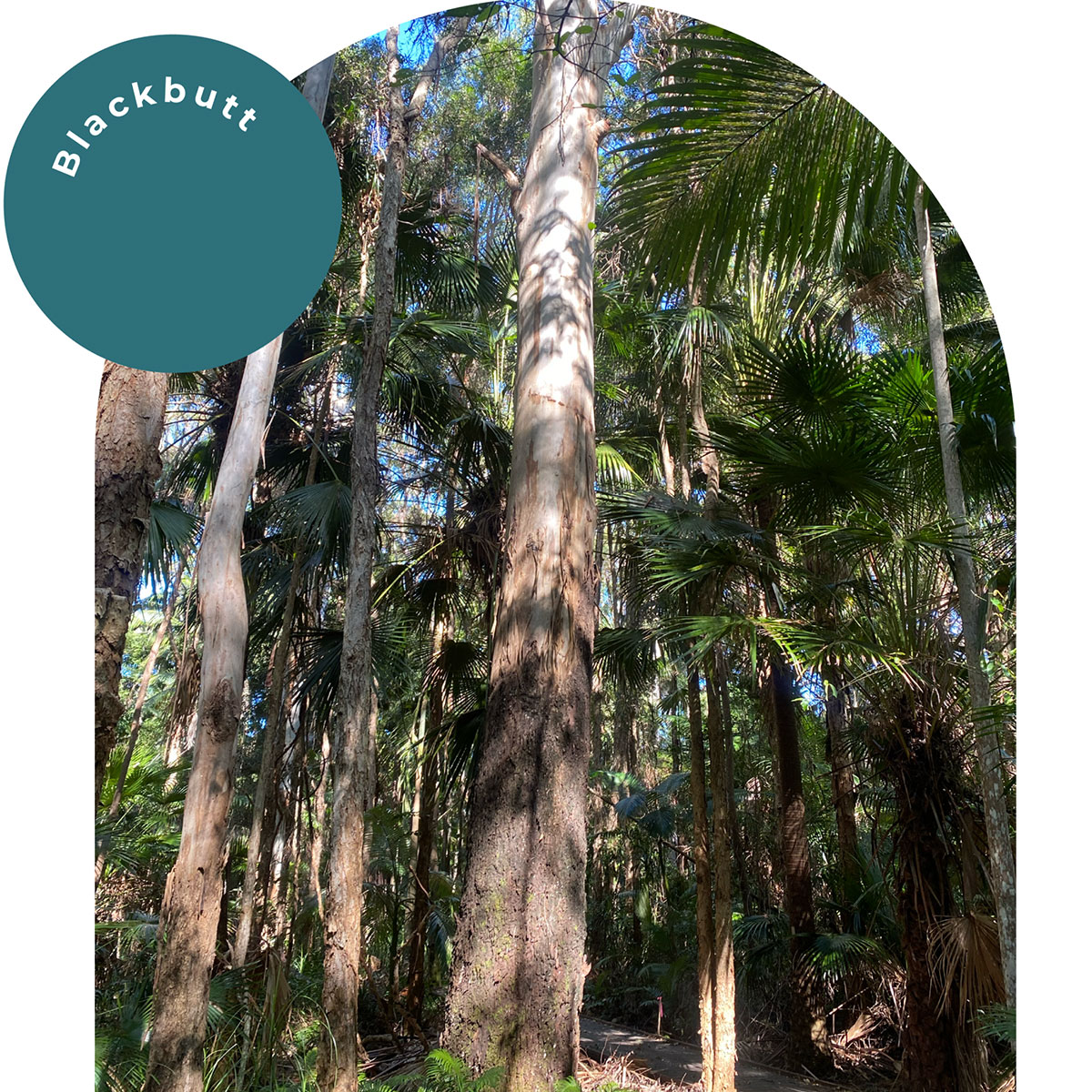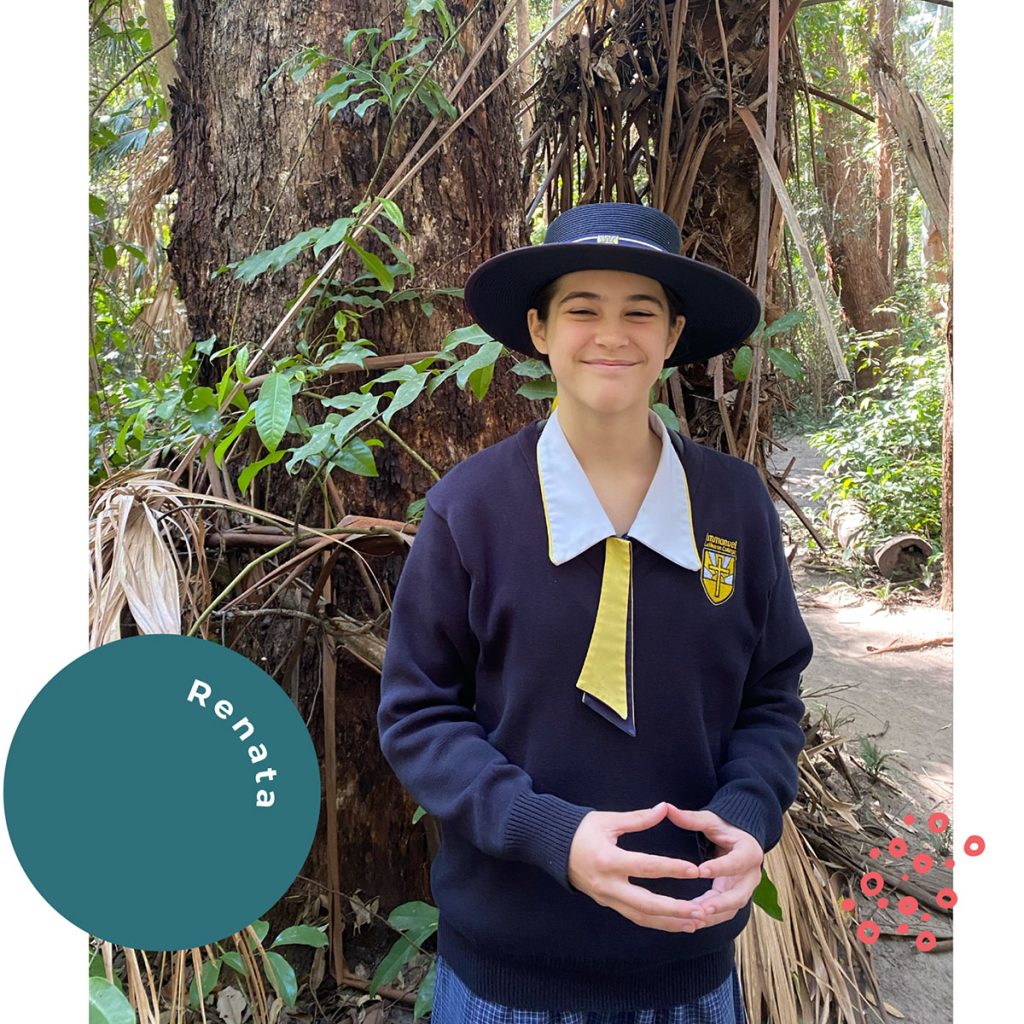Blackbutt
Eucalyptus pilularis
Common name:
Blackbutt
First Nations name:
Toi (Yuggera, Gubbi Gubbi and Badtjala people)
Scientific name:
Eucalyptus pilularis
Height:
A tall tree of up to 40 metres or more in height, with a long straight cylindrical trunk. It can measure up to 3 metres in diameter.
Bark:
Rough, finely fibrous greyish bark on the lower half of the trunk, smooth white, grey or cream-coloured bark above.
Leaves:
Leaves are thick in texture, slightly discolorous (having upper and lower surfaces of different colours), and taper to a fine point. They range from 9–16 cm long and 1.5–3 cm in width.
Flowers:
Its flowers are small and delicate, typically appearing in clusters known as “inflorescences.” These inflorescences consist of numerous individual flowers that are generally white or creamy in color, although they may also have shades of pink or red.


Fruit:
Gumnuts are woody capsules that develop from the flowers after pollination. They are usually spherical or urn-shaped, and their size can vary depending on the species and environmental conditions.
First Nations Uses:
Anti-inflammatory activity along with other medicinal uses as well as for shelter and weapons.
Geographical location:
Found in wet sclerophyll or grassy coastal forests. North from Eden on the far south coast of New South Wales up to south eastern Queensland.
Conservation status:
While the blackbutt tree may not be currently listed as threatened or endangered, ongoing monitoring and conservation efforts are essential to ensure the continued health and viability of its populations, as well as the ecosystems it supports.
Research by:
Renata

Interesting fact:
The species name (pilularis) is a Latin word meaning “a small pill”, referring to the shape of the fruit. The timber of the blackbutt tree is highly valued for its strength, durability, and attractive appearance. It is commonly used in construction for applications such as flooring, decking, framing, and furniture. Its versatility and resistance to decay make it a popular choice among builders and architects.
